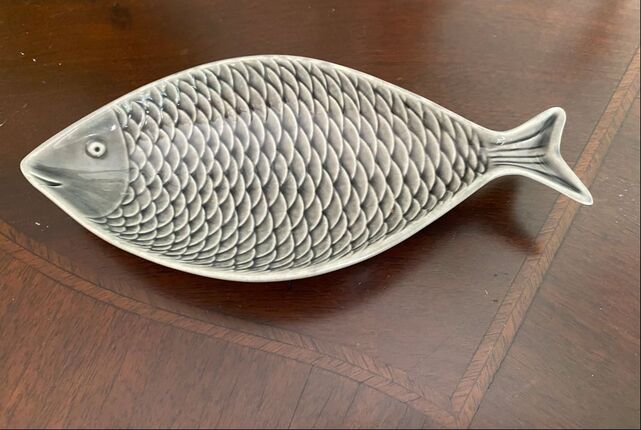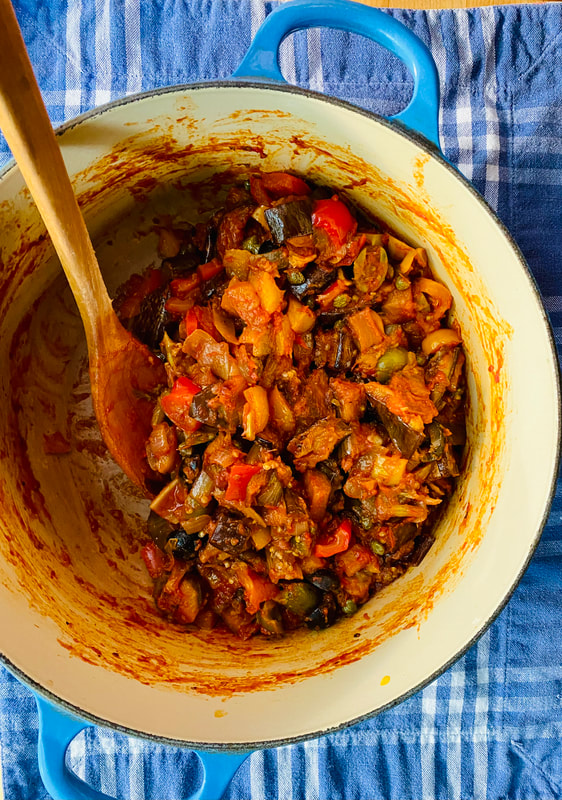|
On the red carpet of Rosh Hashana desserts, honey cake has a far smaller fan base than some of its glittering apple counterparts. Yet honey cakes are iconic, tethered to the High Holidays as a symbol of hope for a sweet New Year and a nod to Israel, “a land flowing with milk and honey.” (Book of Exodus 3:8) The Jewish New Year is a time of introspection and celebration, and an opportunity to reflect on the previous year and consider the one forthcoming. It’s why Jewish bakers also gravitate towards circular baked goods for this season, symbolizing life’s continuous cycle.Honey-laced cakes have long been embraced by cultures around the world. As far back as the 12th century, Italian bakers were known for a dense and honey-sweetened semolina cake; in the 13th and 14th centuries, heavily spiced and honeyed gingerbread, studded with nuts and dried and candied fruit, was prevalent throughout Europe. Eventually, the Ashkenazi Jews in Central Europe embraced their own version, which they enjoyed alongside strong coffee or tea.
Honey cake—also known as “lekach” a Yiddush word derived from the German lecken, meaning “lick” and perhaps the Aramaic lĕkhakh, meaning to “mix in thoroughly”—is often maligned. Much like fruitcake, an overpowering spice profile and stodgy texture are at the heart of the dish’s bad reputation. Even honey cake devotees admit that the dessert is more often about family tradition than flavor, tethering us to generations that once circled the holiday table. In revisiting the tradition, I turned to a cake culled from Bayswater, Queens circa 1950, when recipe swapping was popular within the Temple Sisterhood and the American Jewish volunteer women’s organization, Hadassah. My grandmother, Minnie, was a dedicated member of both. Minnie’s Rosh Hashana cake is a happy marriage between golden honey cake and rich chocolate cake. It is, as my grandmother would say, “a good keeper,” in part due to the high concentration of honey, which works as a preservative. Her recipe also includes a generous splash of Coca-Cola which, having been deemed kosher in 1936, has found its way into many subsequent Jewish recipes. Because we were a family of Dr. Brown’s cream soda fans, I’ve swapped that in (it’s also kosher) for the original cola. And though Minnie’s version was unglazed, I’ve also added a slick of dark chocolate-honey icing, which I find elevates this humble cake to superstar status.
0 Comments
Plums, apples and the last of the strawberries were strutting their stuff at the farmers' market last weekend. The prime real estate, however, went to the prune plums and the strawberries who boasted their very own gingham draped tables and the highest price tags at $10/quart. Bypassing the berries and prune plums, I opted instead for a combo of red and purple heart shaped fruit. The beauty of plums in pie (besides their sweet/tart flavor) is that they require zero peeling and their pits are pretty easy going; more of a quick pluck with your thumb as opposed to the surgical procedure required by certain stone fruits. While waiting to pay, my peripheral vision focused on a father/whining son combo alongside me, casually munching on plums they had not so nonchalantly taken from the wicker display basket. They munched and chatted and whined, waiting to purchase a handful of apples. I wanted to turn around and inquire if the plums were "free with purchase" but it was suggested by my co-marketeer it would be best to avoid a plum ruckus. Gathering up my 4 pounds of treasures, the father/son were next to pay. The farmer behind the register asked, "Anything else?" The father was busy telling the child (who had mostly finished the plum) they would find a trash can "in a minute!" (whining in this case, was clearly genetic) to throw away the remaining uneaten plum. "No, just the apples..."
Stepping away I silently wished for the plum thief and his child a gaping hole in the bottom of their bag of Honeycrisps. My mother, Rommy, had a concise repertoire of hors d'oeuvres that she served with some frequency. Regardless of the size of the gathering, a fine selection of Planter's roasted mixed nuts was considered merely a token snack served alongside cocktails. A stickler for presentation, the medley of peanuts, almonds, brazil nuts and far too few cashews were transferred from their blue tin to one of my mother's signature fish-shaped dishes. The gray pescatarian enamel ware was oven-safe and was originally used by my grandmother, Dorothy, for seafood, the sort of first course appetizer with a buttery crumb topping that was quickly browned in the oven. The fish dishes were Rommy's go-to for any nut and/or dried fruit combination. Crafted in Copenhagen, their tails made them slightly fragile and so they were kept securely behind the glass doors of the mahogany breakfront. On the same shelf as the fish rested an assortment of serving pieces for pre-dinner offerings. An over-sized white platter was called on quite often because it served double duty. A small bowl affixed to the center made the dish suitable for shrimp cocktail (the cocktail sauce nestled in the bowl), and equally agreeable for pigs in the blanket, accompanied by hot mustard. The term "chip and dip" hadn't yet been introduced into our vernacular but I suppose that's what you would call that type of dish today. My mother also had a matching set of sage green earthenware with lids, I'm guessing they were about pint sized, retained heat well and were used for hot dips. One was reserved for the neon orange Wispride and crabmeat combo, the other for artichoke hearts blended with parmesan, lemon juice and mayonnaise. Hors d'oeuvres, quite frankly, teetered on excess, practically a meal in themselves. Imposing blocks and triangles of cheese, artistically arranged on a Dansk board with a matching wood-handled server was an integral part of Rommy's before dinner spread, but nothing was as special as the caponata. A medley of eggplant, peppers, tomatoes and olives, the chunky spread was served cold, alongside Sociables, an assortment of savory crackers. We were keen on the various shapes of the crackers, emphasized on the box as, "Perfect for Entertaining!"
My mother's penchant for caponata was primarily because it was generous with the olives, both green and black. There were plenty of recipes for the Sicilian dish, but my mother's version combined a little from James Beard, a little from WOR radio, and a number of newspaper clippings. It was also pretty tasty served with Ritz crackers, the salty eggplant/olive-y spread nicely balanced by the slightly sweet, buttery cracker. Ritz, however, was not nearly as much fun visually as the Sociables, and were in all honesty, not the first pick on the cracker team. Which meant that the following day, when the Sociables had been exhausted, my mother and I would content ourselves with Ritz, standing in the kitchen, lavishly spreading leftover caponata on cracker rounds, commenting on how the caponata always tasted even better the next day. With the hors d'oeuvres dishes safely returned to the breakfront, without the clink of ice cubes in cocktail glasses, eating caponata on crackers alongside the hostess with the mostest always made me feel like the party hadn't quite ended. |
Archives
July 2024
Ellen GrayProfessional Pie-isms & Seasonal Sarcasm Categories |




 RSS Feed
RSS Feed